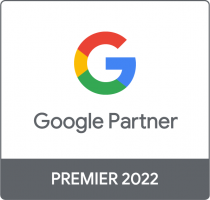Last week Google announced that the existing version of Analytics ‘Universal Analytics’ (UA) is going to be deprecated on July 1 2023. Therefore all businesses will need to use the new version ‘GA4’ from that date & probably long before comparing YoY data is important.
So here are some notes on what we know so far, some answers to questions you might have & what your next steps might be.
Why is Google doing this?
Google bought Analytics back in 2005 & turned it from a paid service into a free product.
Why? For many reasons, one of which was probably because they knew the greater the proof provided about how Google Ads directly led to revenue, the greater the investment in Google Ads!
The problem? UA uses cookies (20 year old tech) to collect data when someone visits a site and cookies have become more unreliable over time (ad blockers, end of 3rd party cookies, regulations, iOS changes etc). Google is also very focused on privacy (yeah ok, they were forced into that by Apple) and automation.
In fact those are Google’s 3 stated priorities for 2022: Measurement, Privacy & Automation.
GA4 is at the heart of all of those. But to achieve their goals, they needed to build a totally new version of Analytics from the ground up.
If we’re being cynical we might believe that Google want (need?) to make sure that reported revenue in GA doesn’t drop due to all the changes listed above.
GA4 also has Machine Learning (ML) at its core. This enables it to make predictions about the future (eg which visitors are likely to convert in the next 30 days) & helps it ‘fill in the measurement gaps’ (ie show revenue from clicks even when that customer is using an ad blocker), more on that below.
So is it better or worse?
Ultimately GA4 is better than UA & is designed for the future we all face as marketers: no third party cookies, more regulation, increasing privacy etc. All of which are great for us as consumers, and present some challenges as marketers that like to measure everything & ‘know’ what happened.
If you remember upgrading to UA a few years ago you’d be forgiven for thinking “so what’s the problem?” let’s just upgrade & get on with it.
Slow your roll. GA4 is completely different. In the way it tracks users on your site, in the way it then models that data & in the reports you get to use to gain insights into your site. And given UA is on ~60% of the internet, those differences will cause some pain.
Every site will need a plan to be re-tagged, code will need to be deployed, new data will need to be collected and marketers everywhere will have to learn to use this new tool.
What will happen to UA data?
The timeline isn’t clear, but Google has said that UA data will still be available to view for at least 6 months after the July 1 2023 deadline (which is when they’ll stop collecting new data in UA). Hopefully they’ll find a way to make that useful historic data available for long after that – but there’s no clarity on that point yet.
We do know though that ultimately those UA reports will become useless, so all sites will eventually need to make the move to GA4 or potentially consider using a totally different tool.
What do you need to do?
Start planning!
Rolling out a full GA4 implementation isn’t trivial. It requires a detailed plan, new code on your site (some of it custom) & time to get familiar with the new interface and reports of GA4.
And as GA4 continues to evolve new options will be available – these will require changes to the setup & possibly the tags/code.
Data Studio dashboards & other reports using UA data will need to change. And of course if your performance marketing relies on UA ‘goals’, these will need to be updated & worst case, completely redesigned.
But you have 15 months right?
Well, if you want to analyse year-on-year data after the July 2023 deadline, you’ll need to have a full working version of GA4 live by July 1 2022! That’s 15 weeks away!
Learning more about GA4
Clearly there’s a lot to learn – GA4 is totally different to UA.
If you’re a WebSavvy client, don’t worry, we’ll walk you through what needs to change on your site, just chat to your Account Manager.
There are some excellent training courses available from the likes of Krista Seiden & CXL. If you want to get really technical, read Simo’s blog.
And if you want to just dive in & get your hands dirty, have a play with the free GA4 demo account
Some Questions about GA4 you may have…
What’s the short version of how GA4 works
GA4 uses an event model. Everything is now an ‘event’.
You click something = event, view a page = event, scroll down = event etc.
And each event has a number of properties (eg the text of the link you clicked on, the URL of the page you viewed, the amount you scrolled etc).
Why is it so different?
Because using events (instead of hits & sessions) is a completely different way to measure what users do.
The good news, this new method works equally well for apps as well as sites & stores, and is more efficient in terms of data storage.
Do we need to change?
Yes, assuming you want to continue to track user behaviour.
Of course GA4 isn’t the only option out there – there are non-Google options. But GA4 plays well with Google Ads & Data Studio, so if you’re investing in performance marketing it makes sense to at least test GA4.
Should we replace UA completely?
No! At least not yet.
We recommend that you use BOTH Universal Analytics and GA4 for the next few months. That way you’ll still have your familiar reports as a backup while you get comfortable with the new interface.
Where are the old reports I’m used to?
Yeah that’s the bad news. They don’t exist. The new UI has a learning curve & requires a different way of thinking about the events that each user took. The good news, there are plenty of free resources: in addition to those listed above check out MeasureSchool’s Youtube channel for some great options.
What does ‘modelled’ data really mean?
If you’re feeling cynical, then you might choose to interpret this as ‘made up data’.
That’s Machine Learning for you… the data you see in GA4 isn’t perfect ‘observable data’ as it was in UA. Instead whenever Google can’t tell exactly what happened (for all the reasons listed above) it uses the power of its Machine Learning (which is among the very best in the world given the talent, data & computing power Google has!) to ‘fill in the gaps’.
This gives them a huge advantage over smaller players & of course ensures that the revenue attributed to your Google Ads investment probably stays healthy!
The downside: this means Google is marking their own homework – and GA4 becomes an algorithmic black box that may have bias built in (we won’t know).
Make it easy for me – what should I do now?
Keep using UA for now.
But prioritise getting a GA4 ‘property’ setup asap for your site.
Start learning how to use the new reports, so that when this is the only version of GA available, you can still answer all the questions you need to about your marketing investment.
As always, please let us know if we can help with the transition for your site.







